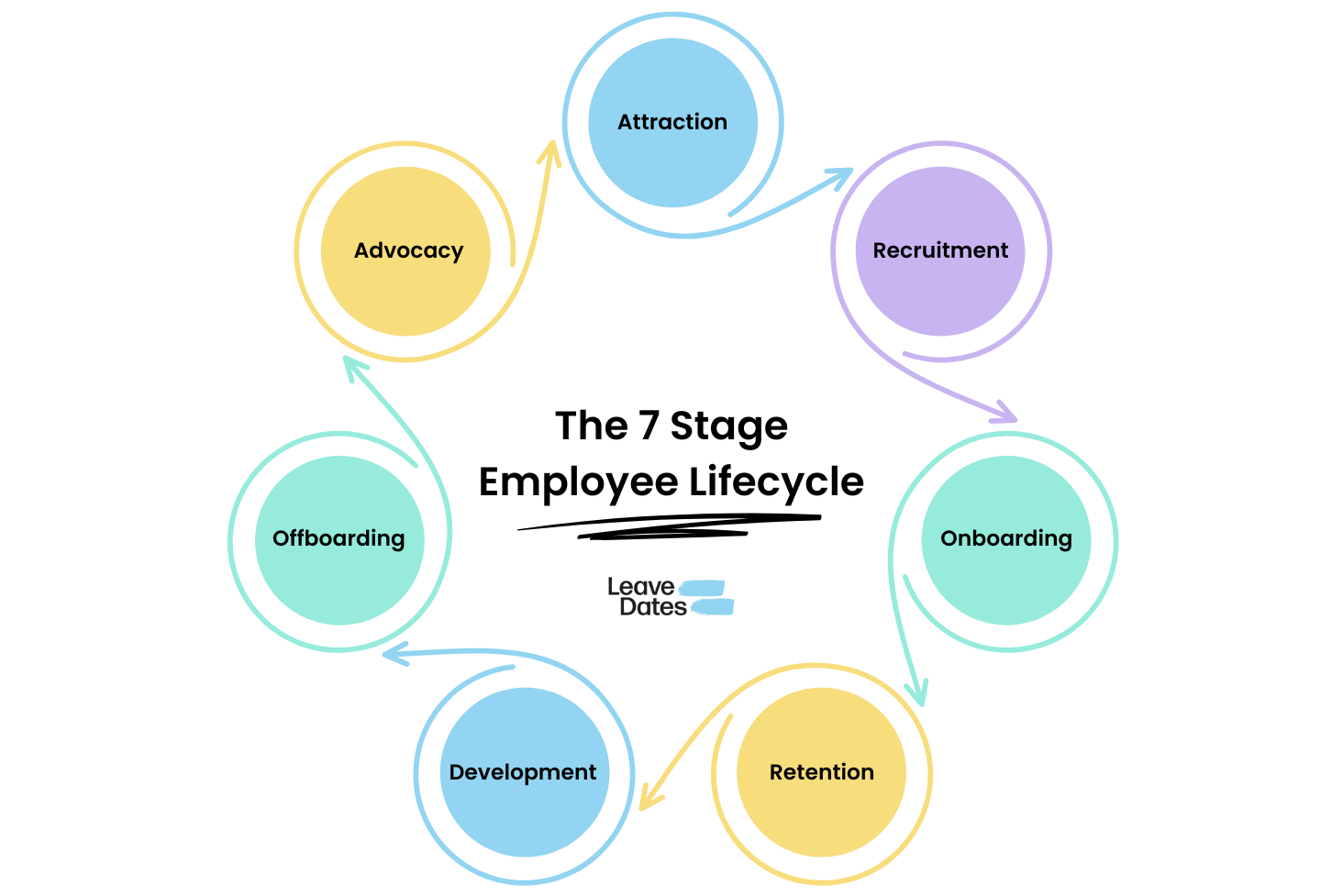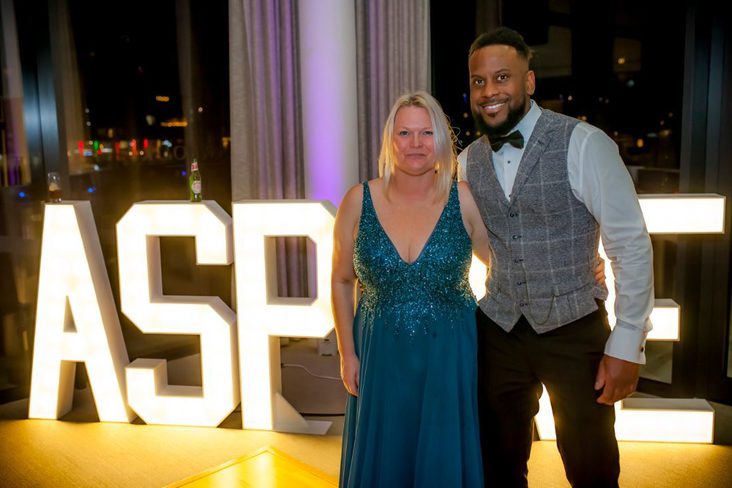Advertising, recruitment, training – not your fave entries on the P&L statement, but not small ones either. And getting bigger, too – staff turnover these days is sky high as younger generations enter the workforce without the ‘job for life’ mindset that many of their predecessors did. For some, it’s just a ‘job for this year’. Spending money to train someone up only for them to take all that knowledge and skill elsewhere is… not nice. But how can you avoid it?
The quickest and most obvious solution to staff turnover is improved retention. If no one is leaving, you don’t have to hire anyone unless your business is growing – a much more satisfying experience than replacing the newbie who’s just handed in their notice. But that’s easier said than done.
Or is it? Retention can seem like a big task to tackle – people leave for all sorts of reasons, right? How can you predict or stop this? It’s true, people do leave for all sorts of reasons, and these vary at different stages of their employment. To avoid getting your head in a spin trying to keep track of it all, it’s best to break it down by the different stages in the employment life cycle. Then think about what actions you can take at each of these points to make people want to stay.
Table of Contents
- What is the employee life cycle?
- How does this relate to retention?
- Attraction
- Recruitment
- Onboarding
- Retention
- Development
- Separation/Offboarding
- Advocacy
- Key takeaways
What is the employee life cycle?
The employee life cycle is a term used to describe the stages that an employee goes through during their time with an employer or company. The (typical) stages are:
- Attraction
- Recruitment
- Onboarding
- Retention
- Development
- Separation/Offboarding
- Advocacy
How does this relate to retention?
The employee life cycle model is a great tool to help you break down and target your employee retention initiatives.
For maximum retention, you don’t want to be letting your prize team members get to stage six. This means your retention efforts should be focused on the first five stages in the life cycle. What we’re talking about here is getting someone to commit to your company long-term. If we compare it to dating, we’re not looking for a casual fling or a holiday romance. We don’t want time-wasters. We’re looking for marriage material; we’re trying to take a new employee from first date to first dance and beyond.
So let’s break it down, stage by stage.

1. Attraction
Here we’re focused on that all-important first impression. This is your Hinge profile. You’re setting out your wares, shouting about what you’ve got to offer and why you’re such a catch. You’re looking through (LinkedIn) profile after profile, trying to find a good fit – someone who shares your values, aspirations and goals for the future. You line up a few promising prospects and if all goes well, you’ll match.
Remember, for many candidates this will be the first time they are exposed to your brand or company. The first step to retention is attraction – you need to appeal to the top talent if you want to grow as a company. To be the best, you’ve got to have the best.
The work you can do here is ongoing, and not related to any particular individual. It’s about consistently working on your reputation as an employer – that means looking at your culture, what you offer your staff and how you’re perceived in your industry. While you might say you prioritise work-life balance and have ‘great employee benefits’, do you actually live these values? What’s your leave policy like? Do you allow flexible working? Think about what today’s candidates want from an employer and make sure you measure up.
2. Recruitment
You’ve swiped right. They’ve swiped right. The wheels are in motion. This is when the conversation begins, moves from the app to text/WhatsApp and then… real life. The initial interview is your first date – you’re both showing off your best selves, laying out your wares and feeling each other out. The chat needs to be on point, the vibes immaculate. They’re out to impress but so are you – if you decide to call them for round two, you want them to pick up the phone.
The process of recruiting an employee is when they will form their first impression of you as an employer, rather than just as a company. At this stage, the number one priority should be communication. Don’t leave people waiting around, wondering if you’ll call. If you’re enthusiastic about hiring them, show it. Be clear about the specific skills and qualifications you’re looking for, and the reality of the role should they get it. You might be facing some stiff competition, so be sure to shout about perks and benefits to get the edge over your rivals.
If you’re vague and wishy-washy at this stage, they’ll think this is what you’ll be like as a boss – if they want a clear path to progression and success, this will be a big red flag. Open lines of clear communication let people honestly assess whether you’re a long-term match.
3. Onboarding
Ah, the honeymoon phase. You’ve avoided the dreaded friend zone, contracts are signed and you’re now ‘officially’ an item. Everyone is on best behaviour. You’re tidying up the flat (office) before they come over, prepping your friends (colleagues) to sing your praises (and not mention that fish pie in the shared microwave situation) and you’re keen to show them they’ve made the right choice.
Getting other people involved can be helpful at this stage. Encourage team members to give a warm welcome, and talk about their time at the company. You want people to feel quickly at home and at ease. So these early weeks and months are about sharing your company values and providing all the training and information you can. They need to know about the work, the people, the goals of the organisation and their own role in achieving these, so they know where the company is now and where it’s going. This creates both excitement about the future, and a feeling of inclusion and security.
4. Retention
Okay, so this is where the hard work starts. We’re well and truly out of the honeymoon phase and the shine might have started to wear off. The attention might have become a bit… stifling. Some ‘charming quirks’ have morphed into annoying habits. Maybe a rival is making tempting offers, or a disgruntled ex(-employee) is bad-mouthing you. Their ex(-boss) is making overtures. You’ve had your first row. They’re having doubts and now you’ve got to convince them to stay.
Employees at this stage of the lifecycle are motivated by rewards and recognition. You might have had your head turned by more recent hires, or been distracted by important clients or projects, and they want to know you still see and care about them. Keep lines of communication open, consult them on new hires and seek their feedback on everything from company performance to the new office layout. It takes continuous effort to embed someone in a work culture and get to know people on a deeper level. This stage is all about relationship-building.
5. Development
This is where you show that you’re marriage material. That you’re invested. Here for the long haul. You’re painting a picture of a long and happy future together and then you’re putting your money where your mouth is – date nights, an extended holiday, couples therapy. Whatever they want from you as a sign of your commitment, you’re giving it to them.
To prevent employees from feeling neglected once they’re no longer ‘new’, you need to invest (time and money) into their ongoing professional development – through additional training and qualifications, regular check-ins and performance reviews. Support (and reward!) those who choose to learn on their own time. Don’t just dangle potential promotions, set a clear path and timeline. Reward them for long service, encourage them to use all their leave allowances and prioritise their wellbeing, talk about any potential or upcoming parental leave with excitement not resentment. Whatever you do, do not give them a reason to leave you.
6. Separation/Offboarding
This wasn’t the plan, but if you do find yourself here – be cool. Be respectful. You don’t want to be the bitter ex. Word gets round and you don’t want to earn yourself a reputation.
Whatever the reason for the separation, you don’t want to end an employment relationship on a sour note and it’s important that you try to provide a positive experience even when the end is inevitable. How you handle offboarding is important because, while you can’t retain that particular employee, this process will be visible to others – both existing and prospective new employees. People talk, and you want to feel confident that what they’re saying about you is good.
7. Advocacy
Is there anything more reassuring, post-breakup, than knowing your ex is being a decent person and staying respectful. That if anyone asks, they had a great time, you’re a wonderful person, it just wasn’t the right fit or time. Also, when you get back out there to start back at step one and you think you’ve scored yourself a hot date, then you start snooping and gathering intel, if their previous partner is still in the friend group, still pals with their family and hasn’t blocked them on socials, well you can’t ask for more green flags than that – you’re ready to go for it.
If you get the previous step right and have both happy employees and happy leavers, you’ll have yourself some advocates for life. They’ll be singing your praises, setting you up with their friends and who knows, one day, they might come back around…
Key takeaways
If you want to tap into the power of love to get longevity out of your employees, use the employee life cycle model to win them over at every point of your relationship journey. This kind of cycle mapping won’t be new to anyone who’s mapped out a customer journey or experience; it’s a very similar process. It’s about knowing who they are, what they value and what they want to get out of their employment, and then making sure you’re there and providing value at each crucial touchpoint.
Who knows? If you get it right, you might just persuade them to delete their Tinder (LinkedIn) profile altogether and say, “I do (want that promotion).”




